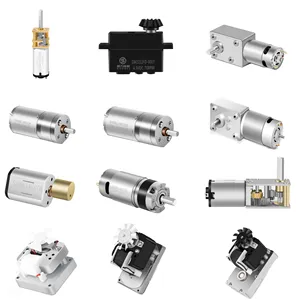











A 12V DC worm gear motor consists of three parts: a threaded gear formed like a screw, an interlocking toothed wheel, and a motor to drive the gear. The worm gear translates the torque of the electric DC motor, driving it to a shaft attached to the wheel. Though the rotational speed of the shaft is less than that of the gear, its torque is greater, and the DC gear motor doesn't have to work as hard to produce it. Consequently, a 12V worm gear motor magnifies the rotational force of the motor that drives the gear.
Torque is the angular force generated by the 12V electric motor to handle a required load, expressed in force-distance units such as foot-pounds (ft-lb) or newton meters (N-m). Starting torque defines the torque the 12V gear motor produces at startup. Continuous torque defines the torque the worm gear motor produces at constant running conditions. Output torque in a 12V DC gear motor is largely dependent on the gear ratio used. A higher gear ratio can achieve larger torque and reduce shaft speed. A higher gear ratio means larger torque and lower shaft speed.
Speed (RPM) is the rotational speed of the shaft generated by the DC worm gear motor, expressed in rpm (rotations per minute). In a worm gear motor, the shaft speed and gear ratio are proportional. The output speed comes from dividing the input speed by the gear ratio. Gear ratios below one will increase speed, while those above ones will reduce speed.
The efficiency of a gearbox is measured by the percentage of power or torque delivered through it. Gearbox efficiency is now an important feature to indicate the overall performance of an electric worm gear motor. The friction and slippage losses that take place inside the gearbox are taken into account by this efficiency factor.